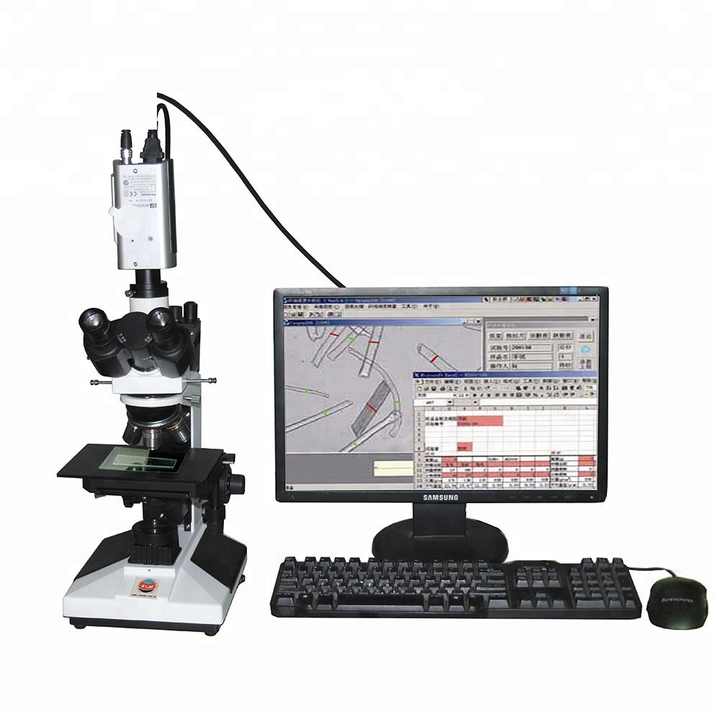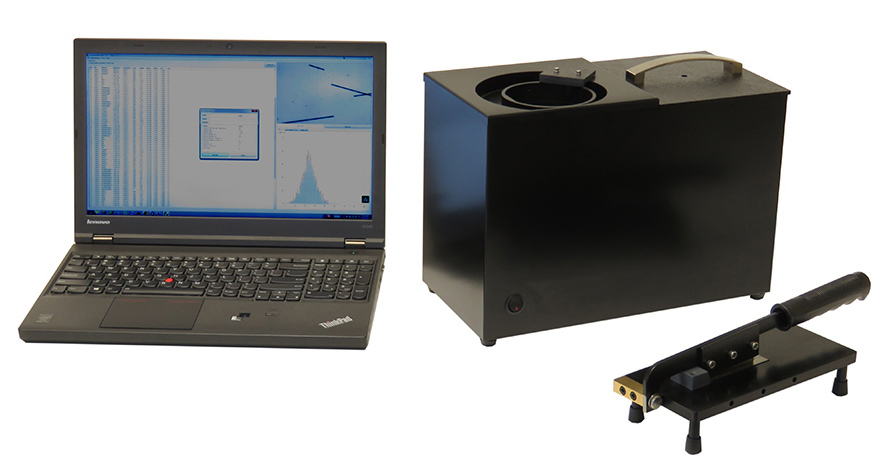Key Factors When Selecting an Optical Fibre Diameter Analyser
Key Factors When Selecting an Optical Fibre Diameter Analyser
Blog Article
Maximize Your Fibre Optic Performance: Understanding Optical Fibre Size Analyser Technology
The performance of fiber optic systems is seriously influenced by the precision of their size, an aspect commonly overlooked in the quest of ideal signal honesty. Recognizing the modern technology behind optical fiber diameter analysers exposes the complex balance in between measurement accuracy and manufacturing top quality. These devices not only enhance compliance with sector criteria yet additionally provide real-time understandings that can preemptively deal with possible concerns. Nevertheless, the ramifications of their use extend beyond mere measurement; they can essentially change the landscape of fiber optic effectiveness. What aspects should one think about to harness their full capacity?
Relevance of Optical Fiber Size
The diameter of optical fiber plays an essential function in establishing the efficiency and effectiveness of communication systems. On the other hand, smaller sized sizes often tend to sustain less settings, which can boost signal clearness and decrease crosstalk.

In addition, recognizing the size's implications can cause set you back savings by decreasing the need for signal amplification and repeaters in comprehensive networks (optical fibre diameter analyser). In verdict, the importance of optical fiber diameter can not be overemphasized, as it straight affects the overall efficiency and reliability of modern interaction systems

How Size Influences Signal Quality
Signal high quality in optical fibre systems hinges dramatically on the size of the fiber. A smaller sized diameter can lead to higher attenuation rates, resulting in signal loss as light travels via the fiber.
Alternatively, bigger diameters typically enable enhanced light capture and lowered modal dispersion, enhancing signal quality. In multimode fibers, a larger core diameter can sustain numerous light modes, however it might also introduce intermodal dispersion, which can weaken signal quality. Picking the optimum fibre size is critical for accomplishing the preferred performance in particular applications.
Furthermore, the communication between the fibre size and the wavelength of the light used plays a crucial duty in establishing the reliable transmission range and overall signal integrity. Comprehending exactly how fibre diameter impacts signal quality is vital for network developers and designers making every effort to enhance optical fibre systems for dependable, high-speed data transmission.
Summary of Diameter Analyser Modern Technology
In several optical fiber manufacturing procedures, accurate dimension of fiber diameter is crucial for making certain consistent performance and quality (optical fibre diameter analyser). Diameter analysers are sophisticated instruments made to analyze the physical dimensions of optical fibres with high accuracy. They use sophisticated optical and laser innovations to gauge the size, ovality, and concentricity of the fiber, therefore giving critical data for quality assurance
These analysers can operate in-line throughout the production procedure or as component of off-line visit this site screening methods. In-line systems enable real-time surveillance, enabling makers to adjust parameters promptly, consequently maintaining ideal production conditions. Off-line analysers, on the other hand, supply thorough examinations of sets, guaranteeing that any type of inconsistencies from defined tolerances are recognized and resolved.
Size analysers significantly contribute to the reduction of defects in optical fibres, improving overall item integrity. By continually gauging crucial parameters, these modern technologies promote compliance with sector criteria and specs. As the need for high-performance optical fibers remains to increase, the function of diameter analysers ends up being significantly essential in achieving the preferred top quality and performance requirements in fiber optic systems.
Key Attributes of Fiber Size Analysers
Although various models of fibre size analysers exist, they commonly share several crucial functions that improve their performance and reliability. Among one of the most significant features is high-resolution dimension abilities, which guarantee specific size readings, vital for preserving quality assurance in fiber manufacturing. Additionally, lots of analysers include sophisticated optical sensing units developed to spot minute variations in fiber size, hence providing vital data for process optimization.
An additional essential attribute is real-time surveillance, permitting operators to get prompt comments on fibre diameter throughout the manufacturing process (optical fibre diameter analyser). This capability promotes quick changes and minimizes the chance of issues. Many analysers additionally come geared up with easy to use interfaces, enabling operators to easily browse with setups and information outputs
Furthermore, robust data storage and analysis performances are essential for tracking historical performance fads and ensuring conformity with sector standards. Some designs even supply connectivity options for combination into existing production control systems, boosting overall functional effectiveness. Mobile and small designs allow for flexible implementation within manufacturing atmospheres, making sure that high quality guarantee processes are seamless and efficient. These functions jointly add to the effectiveness of fibre diameter analysers in optimizing fiber optic performance.
Ideal Practices for Fibre Optimization

First, routine calibration of optical fiber diameter analysers is essential. This makes certain exact dimensions and decreases potential discrepancies that might influence performance. Next, maintaining a tidy workplace is important; dust and contaminants can cause signify degradation.
Additionally, it is necessary to pick fibres that satisfy specific application requirements. This entails examining factors such as depletion, transmission capacity, and environmental conditions. Correct installation strategies should likewise be stuck to, including staying clear of sharp bends and too much tension, which can jeopardize fibre honesty.
Moreover, using innovative tracking systems can help with real-time performance evaluations, allowing timely identification of concerns. Normal screening and maintenance must be carried out to ensure that fibres stay within ideal operational specifications.
Last but not least, training personnel on the most recent fiber optimization technologies and approaches will improve their capacity to carry out efficient approaches. By following these ideal practices, organizations can significantly improve the performance and life-span of their optical fiber systems, guaranteeing efficient communication and data transfer.
Conclusion
To conclude, the assimilation of optical fibre diameter analyser technology is crucial for taking full advantage of fiber optic efficiency. By ensuring accurate measurements of fiber measurements, these analysers considerably boost signal high quality and minimize losses during information transmission. Regular calibration and upkeep of the analysers are vital to promote ideal performance and conformity with industry criteria. Eventually, the application of this modern technology facilitates enhanced data transmission rates and strengthens signal integrity, contributing to the overall effectiveness of fibre optic systems.
Signal quality in optical fiber systems hinges dramatically on the my response diameter of the fibre.In numerous optical fiber production processes, precise measurement of fiber size is necessary for making certain consistent efficiency and quality. As the demand for high-performance optical fibres continues to climb, the duty of diameter analysers ends up being progressively important in achieving the desired high quality and efficiency standards in fiber optic systems.
These attributes collectively add to the efficacy check out this site of fibre diameter analysers in optimizing fiber optic performance.
In verdict, the integration of optical fibre size analyser innovation is crucial for optimizing fiber optic efficiency.
Report this page